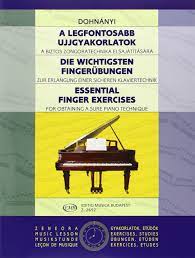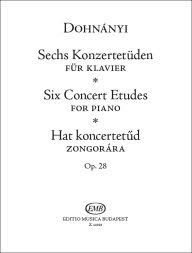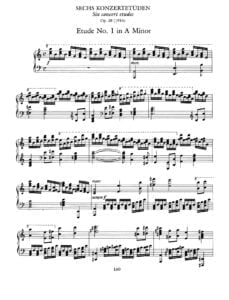Come join us now, and enjoy playing your beloved music and browse through great scores of every level and styles!
Can’t find the songbook you’re looking for? Please, email us at: sheetmusiclibrarypdf@gmail.com We’d like to help you!
Table of Contents
Ernst von Dohnányi: The Grand Architect of Hungarian Music

Best Sheet Music download from our Library.

Please, subscribe to our Library.
If you are already a subscriber, please, check our NEW SCORES’ page every month for new sheet music. THANK YOU!
Ernst von Dohnányi: The Grand Architect of Hungarian Music
In the grand narrative of early 20th-century music, certain figures loom larger in the popular imagination than others. While Bartók and Kodály are rightly celebrated for their revolutionary ethnomusicology and modernist Hungarian spirit, their teacher, mentor, and foundational predecessor often remains in the shadows: Ernst von Dohnányi (1877–1960). A virtuoso pianist, conductor, educator, and composer, Dohnányi was the indispensable architect who built the bridge from the Germanic Romantic tradition to a new, confident era of Hungarian musical life.

The Prodigy from Pressburg
Born in Pressburg (now Bratislava, Slovakia), Dohnányi displayed prodigious talent from a young age. His musical language was firmly rooted in the Austro-German tradition, with Johannes Brahms acting as his primary guiding star. This influence is palpable in his early works, which are masterfully crafted, rich in harmonic warmth, and structurally impeccable.
His breakthrough came with the Piano Quintet No. 1 in C minor, Op. 1 (1895), a work of such staggering maturity and power that it famously earned the approval of Brahms himself, who arranged for its premiere in Vienna. This was no ordinary student piece; it was a declaration of a major new talent, one who had already mastered the forms and emotional depth of high Romanticism.

The Pillar of Hungarian Musical Culture
After studies in Budapest and a successful international career as a pianist, Dohnányi returned to Hungary, determined to elevate its musical standards. He became the central figure in the country’s cultural scene:
- As a Performer: He was considered one of the greatest pianists of his era, renowned for his authoritative interpretations of Beethoven and Mozart.
- As a Conductor: He held prominent posts, including the directorship of the Budapest Philharmonic Orchestra, where he programmed ambitious works and raised the ensemble’s quality to international levels.
- As an Educator: In his long tenure at the Franz Liszt Academy of Music, and later in Budapest, he taught generations of musicians. His pupils included Géza Anda, Georg Solti, and Annie Fischer. Most importantly, he was a tireless supporter and early advocate for both Béla Bartók and Zoltán Kodály, providing them with opportunities, premiering their works, and helping to launch their careers.
Dohnányi created the professional ecosystem that allowed the “Hungarian Modern” school to flourish. He built the stage upon which others could later rebel.

Browse in the Library:
Or browse in the categories menus & download the Library Catalog PDF:
The Composer: Between Brahms and Modernity
Dohnányi’s compositional output is elegant, witty, and brilliantly crafted. He was not a radical innovator like his student Bartók; instead, he absorbed the influences of Brahms, Schumann, and Richard Strauss and refined them into his own unique voice.
His music is characterized by:
- Structural Mastery: A profound understanding of classical form, which he used with flexibility and ingenuity.
- Lush Romanticism: A gift for long, sweeping melodies and rich, complex harmonies.
- Wit and Charm: Many of his works, especially his lighter pieces for piano, are infused with a delightful sense of humor and grace.
Key works include:
- Variations on a Nursery Theme, Op. 25: His most famous piece. It begins with a comically simple statement of “Twinkle, Twinkle, Little Star” by the piano alone, then unfolds into a set of brilliant, inventive, and often gorgeous variations for piano and orchestra, showcasing his range from whimsy to profound grandeur.
- Piano Quintets (No. 1, Op. 1 and No. 2, Op. 26): Cornerstones of the chamber music repertoire, beloved for their lyrical intensity and powerful construction.
- Ruralia Hungarica, Op. 32a: A suite for piano that demonstrates his connection to Hungarian folk idioms, though filtered through a more Romantic, less ethnographic lens than Bartók’s work.
- String Quartets and Symphonies: Worthy additions to the late-Romantic canon, all displaying his impeccable technique.
A Complex Legacy: Exile and Rediscovery
Dohnányi’s later life was marked by tragedy. A vehement anti-fascist, he used his position to protect Jewish musicians and resist the Nazi and later Arrow Cross regimes during WWII. Despite this, he was falsely branded a collaborator by Hungary’s post-war Communist government due to his high profile and former role as a cultural leader. Forced into exile, he spent his final years in Austria and the United States, teaching at Florida State University.
This political persecution, combined with the rising tide of modernism that favored his more avant-garde students, led to the unjust neglect of his music for decades.
Today, Dohnányi is experiencing a well-deserved renaissance. Musicians and audiences are rediscovering the sheer quality, emotional depth, and intellectual satisfaction of his work. He is no longer seen as a conservative foil to Bartók, but as a crucial and masterful composer in his own right—the grand, humane architect who laid the foundation for a century of Hungarian music and left behind a body of work that stands as a magnificent testament to the enduring power of Romantic expression.
